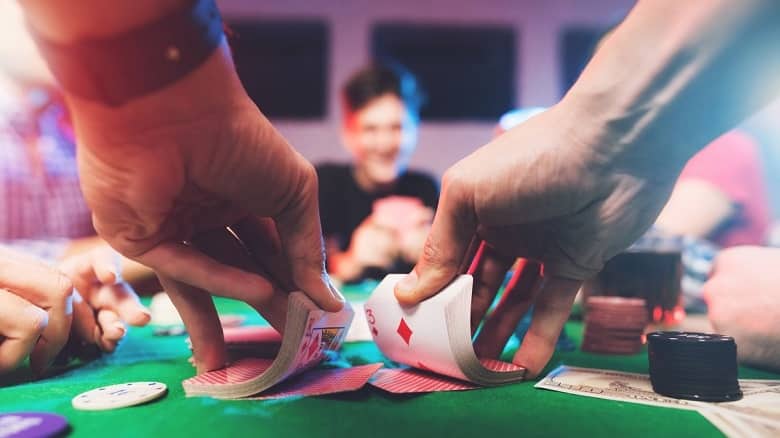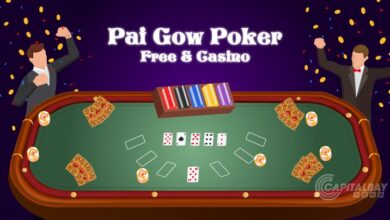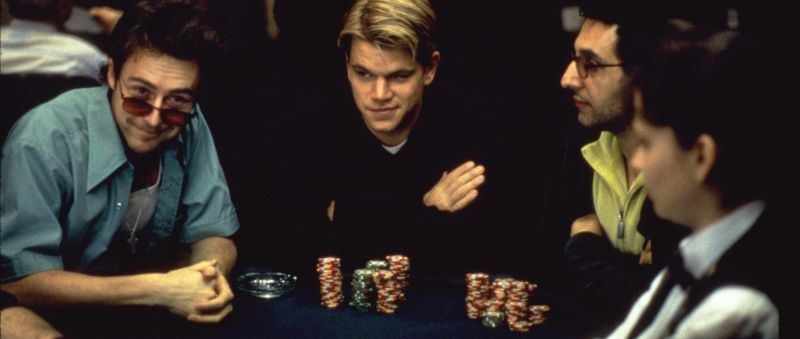Poker Angle Shooting Explained
Fricke has been cashing in tournaments almost as long as Lee, with a 2nd place finish in the 2007 Aussie Millions Poker Championship Main Event good for $795,279 his largest score to date. 'All-in, two million' The angle shooting incident in question occurred at the blind level of 30,000/60,000 when an UTG player shoved all-in for about 600K in. It’s all the information that comes in the hand history file you would download from an online poker site, and which you would post in a forums thread to do a hand review. A simple and complete definition of angle-shooting, then, is that it is an attempt to deceive another player about the current game state. Playing 1/3 at Caesars Windsor. The pot is a little small, I dont know the exact cards on the flop, but here is how the conversation goes. Angle shooting is when a player pretends to make a mistake or do something they know is wrong to trick the other player. Talking in poker is not angle shooting, I can say whatever I want at the table, it may be bad etiquette but not angle shooting.
Poker Bonus Offers
- $400
- $500
- €200
- £470
- $600
- $600
- $200
- $600
- €1000
- £230
- £100
- £450
- $600
- £150
- $500
- $500
- $500
Angle shooting in poker refers to the practice of using various underhanded or unfair methods in order to take advantage of an inexperienced opponent. Such behaviour may appear to be unethical, but as long as it does not actually break any rules, angle shooting cannot strictly be considered cheating. A simple example would be peeking at a player’s hole cards when he/she fails to cover them up properly, but there are many more advanced forms which are more malicious and marginally legal at best.
Among the many forms of angle shooting is the “incomplete call,” which takes advantage of a rule used in many poker rooms that states an insufficient bet must be treated as no bet. An angle shooter will purposefully “call” a bet or raise by pushing forward fewer chips than are required, without saying a word, hoping the opponent will turn over his/her cards without checking to see if the pot is right.
If the angle shooter has a winning hand, he/she will quickly rake in the pot. But if the hand is a loser, the angle shooter can claim the call was incomplete, that she/he did not really intend to call, and then retrieve whatever amount was put forward as un-wagered.
Along these same lines, the use of ambiguous hand gestures can be “reinterpreted” by the angle shooter. What looked like a “check” can be claimed as a “bet” after others check, or a “call” can be reinterpreted as a “raise” if it seems beneficial to the angle shooter’s purposes. Showing one’s cards, for example, might be thought of as folding, but an angle shooter may judge a player’s reaction and then continue to play on.
In all of the above examples, the angle shooter has been careful not to say anything about the action that is taken. Quite often such silence is a tip-off that a player is attempting to gain an unfair advantage. Extra caution should be used when facing any opponent that fails to clearly indicate exactly what he/she is doing in play.
Another type of angle shooting involves an opposite strategy, using words to fake a hand or outwit a less experienced player. An example would be, when playing Texas Hold’em,” the angle shooter declares joyfully, out of turn, that the River card has just made his/her hand—“That’s the flush!” or “Inside straight!” or something similar. The hope is that others will believe it and toss in their hands. To guard against this, make sure that speaking or playing out of turn is against the rules in the game and draw immediate attention to any infraction.
In an attempt to escape from a bad situation, an angle shooter might deliberately spill a drink on the cards, feign a sudden medical emergency, or otherwise physically disrupt the game. Such angle shooting is not entirely limited to live games, either. Online players may attempt to get out of bad situation by disconnecting their computers.
Other actions involve how chips are used at the table. Following a big win, an angle shooter might remove chips from the table and pocket them, hoping to make his/her position appear weaker than it is. This is called “ratholing,” and it is against the rules in most poker rooms, though not all.
Along the same lines, an angle shooter who is winning may cash in at a ring game, then reenter the table with a smaller stack—an action known as “going south.” Again, removing chips from the table may prohibit reentry at some tables, but not all. Online, this can become a frequent problem, as winners “short stack” their positions by jumping in and out of play. On the other hand, poker rooms with long waiting lists are virtually immune to such tactics, but it is every player’s personal responsibility to know what rules pertain.
It is also important to remember that almost all poker players angle shoot to some degree. It is part of the game to use the rules to one’s own benefit. Even professionals have been known to angle shoot each other in tournament play, tabling a losing hand with bravado in hopes that the opponent will muck a winner or calling the clock on someone to get him/her to fold or make a bad choice. Those who know the rules well are in the best position to use them to their full advantage, and it still isn’t cheating, just angle shooting.
Published on: 04/10/2010
Related Articles
Different Poker Games
Poker Etiquette
Poker Terminology
Bluffing in Poker
Antes, Blinds, Chips and Limits Explained
Checking, Betting, Calling, Raising and Folding Explained
Introduction to Omaha Poker
Introduction to Seven-Card Stud
How to Use the Continuation Bet
Using Pot Odds in Poker
What is Angle Shooting?
Determine the Winning Hand
Poker Angle Shooting Explained Drills
Poker Temperament and How to Manage It
Using Poker Chat
How to Play Caribbean Stud
How to Play Three-Card Poker
22:43
23 Sep
When it comes to winning, some players will stop at absolutely nothing. Whereas cheating and stealing might both get the job done, thankfully in poker they are both illegal – back in the early days of the game you’d end up with a bullet in the belly for your trouble!
But what about those grey areas? Things like lying to your opponent, hiding big chips behind smaller ones or deliberately playing out of turn to pries that extra bit of information out of your opponent? They might not be in the spirit of the game, but then again they’re not explicitly against the rules.
Angle-shooting is the name given to these unethical approaches to the game, and such sharp practices are certainly not limited to the seedier back-street poker rooms of the movies.
Poker Angle Shooting Explained Footage
Let’s take a look at the most high-profile ‘angle-shoots’ of recent years and take on the role of ‘judge and jury’ against the bad guys. Be warned - some of the culprits may well surprise you!
Case study 1.
Tony G vs Phil Hellmuth
Antanas ‘Tony G’ Guoga is certainly not one of the most surprising angle-shooters on this list! The loud-mouthed Lithuanian-born Aussie has made a career out of excellent play and, some might argue, even better insults.
The ‘Australian Airbag’ – just one of the epithets Guoga has picked up over the years – is known for his quick-witted and unrelenting verbal assaults on other players, admittedly designed to put the opponent on tilt rather than a malicious attack.
His place on our list today was earned during Season 2 of the Big Game, in a hand against another of the world’s most outspoken players, Phil ‘PokerBrat’ Hellmuth.
The charge: Blatantly lying to his opponent (and everybody else at the table!)
The case for the prosecution: While Hellmuth was counting out his opening raise, Tony G announced he was all-in and stated that he was doing so blind. Not true, as the commentators and viewers -everyone bar Hellmuth and the other players that is - could see. Tony G had already glanced at his hole cards, and there was TV evidence!
After asking Guoga several times if he really hadn’t seen his cards, and after Joe Hachem also asked and was told no by Guoga, Hellmuth eventually took the Aussie at his word and called the all-in.
Tony G turned over A♥K♥, which dominated Hellmuth’s A♠J♦, and proceeded to cackle loudly at Hellmuth’s call. “Oh, you lied” was Phil’s immediate comment. “Of course I lied!” was the Aussie’s response. “It’s poker Phil – what do you think this is?” and the cameras captured the ensuing, rather unedifying, action in glorious techni-color!
The case for the defence: Poker is a game where you are supposed to mislead your opponents! On this simple point, the defence rests its case.
Mitigating circumstances: Rather surprisingly, to this author at least, Guoga’s bad behaviour and ungentlemanly conduct does not seem to extend beyond the green felt. As a well-respected businessman and philanthropist, Tony Guoga also founded the Lithuanian Poker Federation.
Verdict: Guilty but sentence is suspended for good behaviour away from the tables!
Case study 2
Daniel Negreanu vs Steven Silverman

Negreanu is almost certainly not a name you’d expect to find keeping company with the other reprobates skulking around the angle-shooting club! But even the cheerful, honest and open of people have skeletons in their closets.
Seen as one of the best ambassador’s poker has, Negreanu tarnished that image somewhat during the 2013 EPT Barcelona €10,000 High Roller.
The charge: Deliberately over-betting and then immediately pretending it was a mistake.
The case for the prosecution: Picking up A♣K♥ Negreanu opened for 11 times the BB, a huge 45,000 bet with the blinds only sitting at 2000/4000.
Looking and acting embarrassed at his ‘accidental’ massive bet, Negreanu induced –and obviously called - an all-in from table chip-leader Steven Silverman who tabled K♣J♣.
“That really was a mis-click”, stated Negreanu – and any suspicions would generally fade away quite quickly with it being Negreanu in the dock. When the board ran out dry, Negreanu found himself with a healthy chip-lead - the knowing smile he gave the cameras indicating all is sometimes not what it seems with Kid Poker.
Some time later, Negreanu revealed that it was indeed an angle-shoot and that it was his opponent’s responsibility to decide whether he was being truthful at the table or not! This surprising confession pretty much seals the case.
The case for the defence: The defence will not be calling any witnesses.
Mitigating circumstances: The positives Negreanu has brought to the game of poker are incalculable, and even super-nice guys are allowed to resort to naughtiness once in a blue moon. Young Silverman has perhaps even been taught a useful little lesson which will stand him in good stead for the future.
Verdict: Guilty by his own admission, Negreanu is sentenced to 2 year’s hard-labour, teaching at the Poker School for Naïve Young Players.
Case study 3.
Dan ‘Jungleman’ Cates vs Scott Seiver
The Party Premier League season 6 brought together two of the most socially awkward players in poker, players with a history between them, and it inevitably spilled over into accusations of cheating combined with some foul language.
Seiver is seen by many poker fans as a ‘whinger’ – not happy unless he can find something to complain about. Enter Dan ‘Jungkleman’ Cates, a player whose naivety and awkwardness has often been his own downfall.

The charge: Acting out of turn – repeatedly!
The case for the prosecution: Picking up A♠J♦ in 1st position, Jungleman’s 10k raise was called by Siever, holding 8♥8♠ in late position, and Antonio Esfandiari came along for the ride in the SB with Q♦9♦. When the flop came AxK, Cates instantly checked – out of turn! The action was, or ought to have been, on Esfandiari. Seiver was incensed, claiming Cates was doing this “every time” killing his action.
So why is acting out of turn so bad here?
Well, if we look at the ‘normal’ course of action, Esfandiari would likely check having missed the flop, Cates would check behind and Seiver would likely follow suit hoping to turn trips. Cates would be unlikely to make any money – he needs someone to bet out, so he can re-raise them.
So his out-of-turn check, indicating weakness or that he didn’t like the flop, tempts Esfandiari into betting which a) allows Cates to re-raise and b) prevents Seiver from having any odds at all to call and see the turn.
Seiver’s justifiable accusations of angle-shooting, claiming that it only happens when he is in a hand, were met by the ‘f-bomb’ from Cates, and the table descended into a free-for-all, equal parts support and condemnation of Cates.
The case for the defence: Jungleman Cates was in 1st position – it’s an awkward spot at the table for following the action. Added to this, the table-talk was generally loud and loose, so making a mistake and playing out-of-turn will inevitably happen on occasion.
Mitigating circumstances: Cates comes across as a very naïve guy. He has been taken for a ride many times in his career, putting faith in other people and losing lots of money in the process. Coupled with his flaky behaviour at the table, it may not have been a deliberate angle-shoot.
Verdict: Guilty by a majority decision and sentenced to 100 hours of community service helping Seiver to find some positive things to focus on in life!
Case study 4.
Ivan Freitez vs Eugene Yanayt
Fool me once, shame on you. Fool me twice, shame on me. Fool me four times…well, you can decide for yourself what the shame sentence for this one should be!
The EPT 7 Grand Final in Madrid saw possibly the worst serial angle-shooting episode in televised poker history, and the outcome gives lie to the old adage that ‘crime doesn’t pay’.
The charge: Raising on the river, then pleading that you meant to only call.
The case for the prosecution: With the board showing 5♣3♦K♠5♦6♠ Eugene Yanayt bet out on the river holding K♦Q♠. This left his opponent Ivan Freitez – holding 6♥5♥ - in a very difficult position. How could he get his full house to make some more money? A normal raise would likely see Yanayt fold his ‘top pair/ top kicker’. But Freitez had a cunning plan! A plan which, it transpires, he had already managed to implement 3 times previously in the same event.
Freitez announced ‘raise’, then immediately corrected himself, stating that he meant to only call. When the tournament director, Thomas Kremser, was called to the table, things got very interesting indeed. Not only was Freitez told that his ‘raise’ had to stand, he then proceeded to explain to Yanayt that Freitez had pulled the same stunt 3 times previously!

Why would this serial angle-shoot be of benefit to Freitez? Well, if he could convince his opponent that he had only a middling holding, top pair with a weak kicker perhaps, and his ‘enforced’ raise was just an ‘English as a 2nd-language’ mistake, then his opponent might call, or even come over the top with a re-raise.
Amazingly, despite Yanayt being informed of exactly what the angle-shooting Freitez was doing, he proceeded to call anyway! Freitez turned over his boat and scooped the pot. The rest of the table could only look on in disgust as Freitez then went on to pick up the title.
The case for the defence: Freitez made an unfortunate mistake because of his poor command of English.
Poker Angle Shooting Explained Targets
Mitigating circumstances: None! None whatsoever as Freitez had pulled the same stunt several times and knew exactly what he was doing.
Poker Angle Shooting Explained Chart
Verdict: Guilty as sin, sentenced to be an EPT poker pariah and set to appear as public enemy number 1 in every angle-shooting compilation until the end of time!